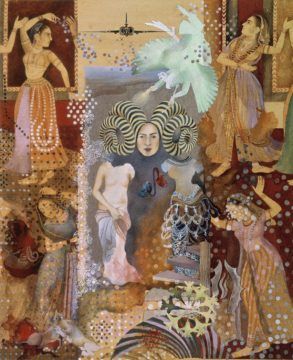Naib Mian in The New Yorker:
 In 2019, two Persian paintings sold in a private-auction house, in London, for roughly eight hundred thousand pounds each. The paintings were illuminated manuscripts, or “miniature” paintings, and they belonged to the same book: a fifteenth-century edition of the Nahj al-Faradis, which narrates Muhammad’s journey through the layers of heaven and hell. The original book, once an artistic masterpiece, had been ripped apart, reduced to sixty lavish images. Bound, the manuscript was likely worth a few million pounds; dismembered, its contents have sold for more than fifty million.
In 2019, two Persian paintings sold in a private-auction house, in London, for roughly eight hundred thousand pounds each. The paintings were illuminated manuscripts, or “miniature” paintings, and they belonged to the same book: a fifteenth-century edition of the Nahj al-Faradis, which narrates Muhammad’s journey through the layers of heaven and hell. The original book, once an artistic masterpiece, had been ripped apart, reduced to sixty lavish images. Bound, the manuscript was likely worth a few million pounds; dismembered, its contents have sold for more than fifty million.
The dismembering of manuscripts is part of a larger story, a tale of extractive patronage and the passage of empires. The term “miniature” is a colonial creation, a catchall category for a diverse array of figurative paintings that emerged in modern-day Iran, Turkey, and Central and South Asia. During imperial rule, most illuminated manuscripts were claimed by private collections and museums in Europe, where many still reside in storage, effectively erased. (In 1994, the Museum of Contemporary Art in Tehran had to trade a de Kooning in order to repatriate part of a sixteenth-century manuscript.) The craft, too, was diminished. When colonial schools taught the “fine arts,” manuscript painting was neglected. Even after independence, Pakistan’s premier art academy, the National College of Arts, emphasized Western traditions.
By the time the artist Shahzia Sikander arrived at the N.C.A., in 1987, manuscript painting was seen as kitsch. But, on campus, Sikander was introduced to Bashir Ahmed, one of the few artists linked to the craft’s legacy.
More here.
